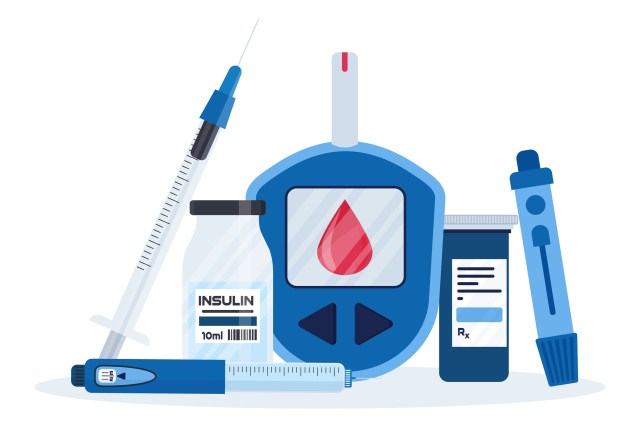Course Summary
Type 1 diabetes mellitus is a chronic, autoimmune disease that occurs due to pancreas beta cell destruction and insulin deficiency. Symptoms of type 1 diabetes result from high levels of blood glucose which is also known as hyperglycemia. Type 1 diabetes generally begins in children and adolescents however can also develop later on in adults. The etiology of type 1 diabetes remains unknown however it is widely believed to develop because of T cell-mediated destruction of beta cells and autoantibody activity that affect the production of insulin. Environmental triggers and genetic factors will influence the type of autoantibody that influences disease progression. A cure for diabetes is currently not available and disease management depends on lifelong insulin injections. Varied approaches to insulin administration may be introduced to type 1 diabetics, including continuous glucose monitoring and insulin pumps. Treatment options related to type 1 diabetes and several case studies are discussed.
Course Format
Homestudy
Course Syllabus
- I. Introduction
- II. Epidemiology
- III. Prediabetes versus Diabetes
- 1. Diabetes Type 2 versus Type 1
- IV. Type 1 Diabetes
- 1. Case Study: Dietary Control in Type 1 Diabetes
- 2. Case Study: Type 1 Diabetes, Uncontrolled
- V. Diabetes Type 1 Treatments
- 1. Rapid-acting Insulin
- 2. Short-acting Insulin
- 3. Intermediate Insulin
- 4. Long-acting Insulin
- 5. Pre-mixed Insulin
- 6. Oral Agents
- VI. Fast-acting Insulin
- 1. Humalog ® (lispro)
- 2. Novolog ® (aspart)
- 3. Case Study: Bedtime Hyperglycemia
- 4. Apidra® (glulisine)
- 5. Inhaled Insulins
- 6. Afreza® (inhaled insulin)
- VII. Short-acting Insulin
- 1. Regular R or Novolin R
- 2. Case Study: Type 1 Diabetes and Elevated A1c
- 3. Levemir® (insulin detemir)
- VIII. Method of Monitoring the Blood Sugar
- 1. Continuous Glucose Monitoring
- 2. Case Study: Insulin Algorithm
- 3. Case Study: Chaotic Glucose Pattern
- 4. Case Study: Consistency in Glucose Pattern
- 5. Case Study: Switching from NPH to Detemir Insulin
- 6. Case Study: Late Afternoon Hypoglycemia
- 7. Case Study: Late Morning Hyperglycemia
- 8. Case Study: Evening Hyperglycemia
- IX. Summary
Author
Kellie Wilson, PharmD
Kellie Wilson is a Doctor of Pharmacy practicing in Anaconda, Montana, where she lives with her husband and four children. She attended the University of Montana in Missoula where she graduated in 2009 with a doctorate in pharmacy. She later worked in Boise, Idaho for a large, retail pharmacy for 2 years, and then returned home to Montana to oversee an independently owned retail and long-term care pharmacy in Anaconda. As an independent retail pharmacist she has become very involved in psychiatric pharmacy for two major behavioral health organizations that are located around all of Montana. Kellie’s passion is retail pharmacy because she enjoys the interactions with customers as well as the challenges and rewards of staying current with the continuous changes in the pharmacy field.


